Editor's note: This post is part of a series of unpublished interviews from the personal research archive of noted guitar writer Tony Bacon. These interviews will be appearing on Reverb in the coming months.
Stay tuned for more interviews from Bacon's Archive coming soon. For previous installments, take a look at Tony's interviews with Tom Petty and Chet Atkins, as well as a deeper look into the recording of Sgt. Pepper's.
I interviewed George Fullerton in the early ‘90s for The Fender Book, my first book about Fender and its instruments. George was one of the first employees at Leo Fender’s base in Fullerton, California, coming on board at age 24 in the opening months of 1948.
I visited George in 1992 at his house on the suitably named East Harmony Lane in Fullerton and enjoyed a long and absorbing chat about the early days of the Fender company. George stayed there until 1970, when he went to Ernie Ball for a while and then, with Leo, started the G&L company. He sold his interest in G&L in 1986, and he died in 2009 at the age of 86.
How did you first meet Leo Fender?
Leo had a radio repair shop. Course, I knew who he was. You’d see him in his shop. He used to sell records, too, and I used to go in there back in the early war years. I got acquainted with Leo about the middle ‘40s. I was interested in electronics.
As a hobby?

No, I was really quite interested in electronics generally, and also music—I played in a little group. Leo had this radio repair shop. I also repaired radios for another company, did that part-time as well as play music part-time, went to school as much as I could—so it was a natural thing for me to be interested in what Leo Fender was doing. And I liked him when I met him, used to go round there a lot, to his store, and talk with him.
Later, around the mid-'40s, Leo and a man name of Doc Kauffman designed and started building some little lap steel guitars and small amplifiers. They were called K&F. It was a new concept for people, after the war was over and all. A lot of people did teaching, had classes, this so-called Hawaiian guitar.
And when I really got acquainted with Leo, there used to be a park in Fullerton on the west side of town called Amerige Park. They would have community happenings. They always had some kind of a celebration on the 4th of July, and—I believe it was ’47—Leo used to supply the amplifier and sound system for these programs.
He’d come down there and set this equipment up. Different musicians would come there and set up and sing. A lot of people really liked it. That particular day I got acquainted with Leo at this park, spent time with him. He was interested in what I was doing, my thing—I played guitar a little.
Were you playing that day?
No, I was just there. Leo had like a panel truck, flat-top and long-bodied, and he’d mount speakers on top of it, play music. When they had community happenings he would have somebody drive this van up and down the streets advertising the event.
There were other occasions that they used these speakers, one was the Sunrise Service on Easter Sunday that used to take place on top of Hillcrest Park, where they go out before daylight for a sunrise service out on the mountain somewhere.
He used to call me and talk about things, and he wondered if I’d take care of this service for him, which I used to do. I’d get there before daylight on Easter day and set up all these speakers and mics. And I’d do that for other things, besides. That brought he and I closer together during our association.
Did he talk about guitars?
I was interested in what he was doing, and he called me one time said he had a guitar he wanted me to look at, and it was a little narrow-bodied instrument with an electric pickup on it. So I took it home and I think I played it on the job where I played in the evenings.
But it was a very narrow body and very difficult to hold for a playing musician, which I told him later, but I liked the idea of it and all that. Matter of fact, that instrument is on display now at the Country Music Hall Of Fame in Nashville.
See, the older guitars, the ones that were electrified, were basically acoustic type instruments with a pickup. Leo did that a lot—he’d wind these pickups and mount them on people’s guitars. One of the problems, you’d get so much feedback, because of this cavity, this hollow body.
It was bothersome to people, particularly if you turned the volume up on the instrument. You go to a large place, a club or an auditorium, and you couldn’t hear the guitar. And if you amplified an acoustic type guitar you got all this feedback.
What sort of music were you playing?
Mostly western, what they called country western. I also used to work for a company, delivering—I drove this truck. Leo wanted me to work some with him and I said, Sure, when I’m available. Those days you had to make an income however you could. I was trying to get started in life.
Leo was always telling me that he was intending to get into building some more guitars. Course, he and Doc Kauffman were tied up in this other thing [their K&F company], and I had known Doc Kauffman and liked him very well, but I didn’t know at that time whether I wanted to do that or not.
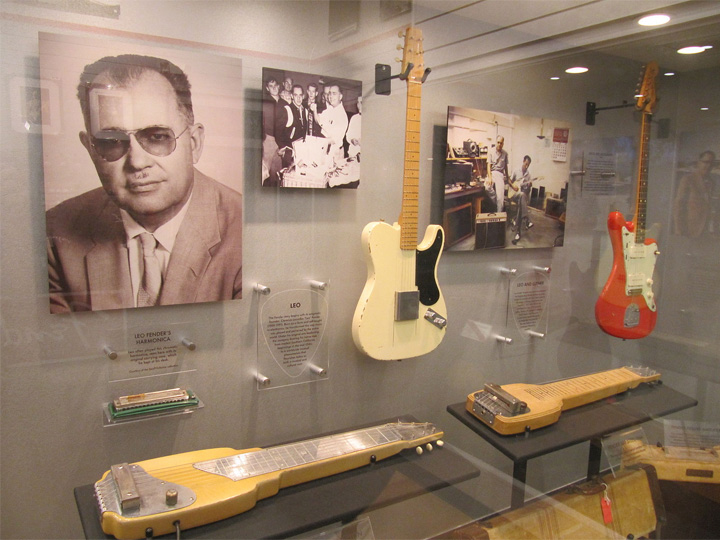
Then Leo built a couple of little buildings over on Pomona Avenue—they were just plain kind of metal buildings, weren’t very handsome looking—and he had some equipment over there and was doing a bit of work there.
This lap steel thing he was doing was in the back of his radio repair shop over on what at the time was called Spadra, now Harbor Boulevard. It was kind of small, so he built these little buildings on Pomona Avenue and did some work over there. Must have been summer ’46 or ’47.
And that was where you started working.
Yes. One day, Leo said, Why don’t you come over and look at this set-up and see if you might be interested in it? So I looked around and finally he said, Look, why don’t you come down and work a few days, see what you think about all this. And I says well, I’ll do that. And he had quite a few small amplifiers, quite a few of these lap instruments, that had come back from dealers, something wrong with them, stacked in the corner waiting to be repaired.
So he said, Why don’t you come in here and repair all them? And let’s kinda get acquainted. It was a small place then, only two or three people there. Couple of gals, and Dale Hyatt was there at that time. [Dale started at Fender early in 1946. Around the turn of ’47–’48, he took over Leo’s radio store business, and a little later became an important salesman at Fender.]
So I went to work over there a few days, repairing those instruments and the little amplifiers. That seemed to be pretty neat.
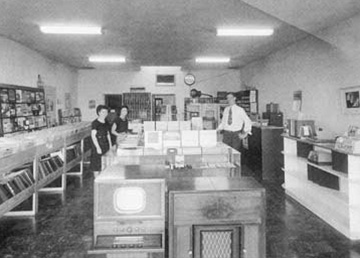
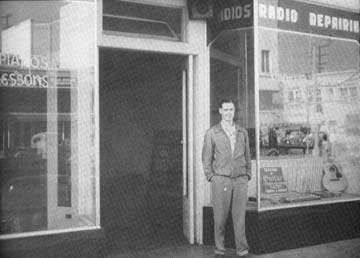
What sort of things would you be doing?
Whatever needed to be done to fix them. Maybe replace the pickups on the instruments, or repair the amplifier. If it didn’t play, you’d work it out. Dale Hyatt I guess you could call a foreman—he was in charge of the shop, kind of ran it for Leo. By that time Doc Kauffman had already left, and soon after, Leo started talking about doing away with the radio repair business because he didn’t want to be tied up with it, it was taking up too much of his time.
So he was able to work out something, at Dale’s request maybe, and sold it to Dale, all the radio, the record sales, all of it. That kind of left no one to be in his property, that was about probably early ’48, because I started working over there February 2, 1948, and it was a few weeks after that. And, as I say, I really had no plans to stay into that.
But Leo started talking about these solid Spanish-type guitars, as we would know them in those days, and course this really interested me. After Dale left, that kinda left a vacancy there. So it just kind of fell on me to pick up some of these loose ends. And the idea of there being new instruments and designs was certainly interesting. This left basically Leo and I alone with this thing, looking after this.
So were there any other people there?
There were two girls, and there was a man named Louis Lugar, who used to spray finishes on the wood, and he’d work with some of the woodwork in the wood shop. The girls wound pickups and soldered the amplifier chassis.
The lap steels were still going.
Still going, but the ones they had been building before, in the other place, that particular model I guess wasn’t as popular as it had been, so about that same time we started working on a new model for this single lap-steel and came out with a new, improved, quicker-to-make thing, covered with kind of a plastic material, pearl-looking plastic. That was in early ’48.
Leo and I started spending an awful lot of time thinking about this electric guitar. Matter of fact, we did a lot of work toward the design of the body and the neck and different type of things, to something that was workable. Leo and I would be there till two or three o’clock in the morning, because during the day we had to work to help keep the shop running building this new stuff.
Work on new things and new designs, well, about the only time you had left was at night and weekends, so there were weeks and weeks and weeks when we didn’t take a day off. And most of those days were long, long hours.
What gave you the most problems for the design of this new solidbody electric?
Well, I don’t know that there was any particular problem, other than how do you design something that’s a brand new item, a brand new thing, that will fit people and be desirable? So we tried a lot of different things and finally came up with this basic design of the Telecaster. Well, when it came out [in 1950] it was called the Broadcaster. That seemed to be the most suitable thing we had found.
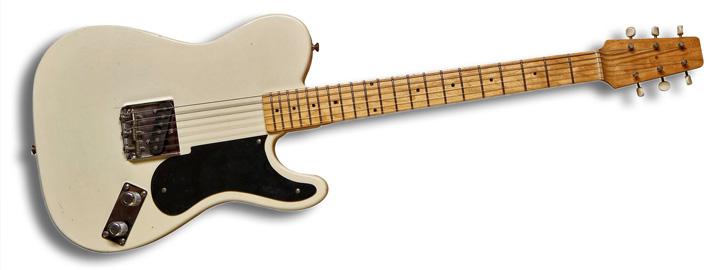
It was easy to hold, easy to play, you could get to all the frets, because the older acoustic-type electrics, when you get down to about the 12th fret you couldn’t reach the rest because of the body, so we had this cutaway.
Leo was very strong for building something that was very serviceable, durable, easy to repair, and built—like he used to call it—built like a tank, to stand up to the rough. We tried to design something that would be strong and do a good job for a playing musician—sound good, be easy to play, easy to repair, and all these things.
So we kind of had our work cut out for us. We’d set out or design in our own thoughts, but now trying to accomplish this was—well, the only hard part was accomplishing the entire thing.
Did you look at other instruments?
There wasn’t any other instruments to look at.
What about the cutaway, for example, where did that idea come from?
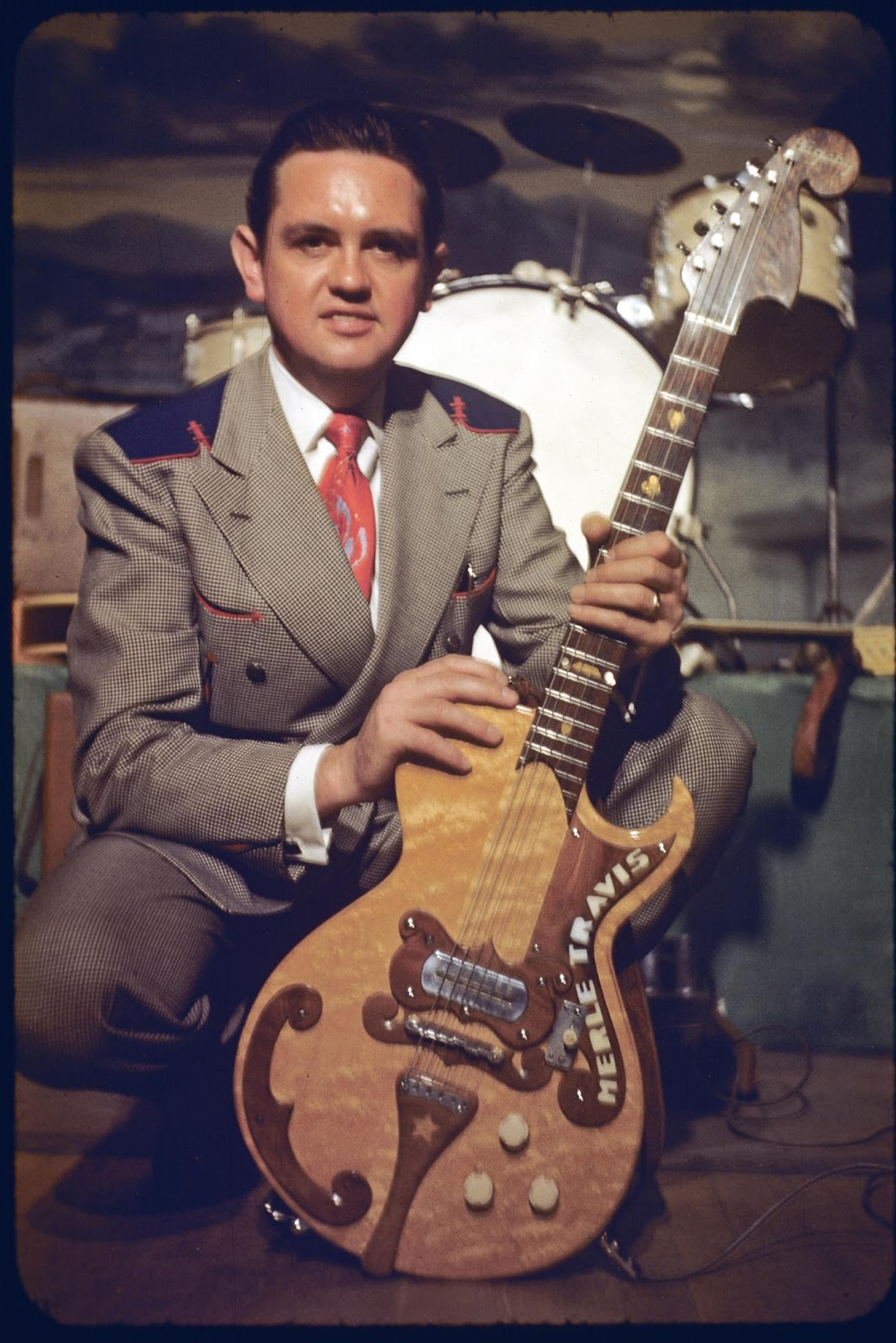
The only other instrument that was on the market that had a cutaway was a guitar that Merle Travis had that was built by Paul Bigsby. You’ve seen that. And of course we knew Paul Bigsby.
He was in the same area.
In Downey, yes, 15 miles from here.
You’d seen the Bigsby instrument being played?
We’d seen—course, we knew Merle Travis, used to see him play at different places. That Paul Bigsby guitar was a new thing and very different. And of course I’m sure that had a great deal of influence on our thinking, that cutaway. But it’s just a natural feeling, you can’t get down to these other frets. And we talked to a lot of players.
When you’re in the design business, and it doesn’t matter if it’s an automobile or you’re running a restaurant, you need to think about the consumer and listen to what he says. After all, you’re designing and building something that will do him a better job. The better it does his job, the more likely he is to want it. We talked to a lot of people, and we listened. We did that over all the years.
How did you get the Broadcaster and Telecaster names?
I think Leo basically came up with the names, the Esquire and the Telecaster—Broadcaster first. That came up because in those days broadcasting was the name of the game, the big thing. Course, we had to eliminate that name, because Gretsch were using the name, so we changed to Telecaster. And there again, that was a natural thing, because television was new.
Leo, with his radio repair shop, when television was brand new he probably had the only place in town that had televisions, and he used to have one that he’d put in the window facing out into the street, with the speaker outside. At night there’d be a crowd of people out and around, watching wrestling or whatever was on.
Leo was always interested in people and what people thought and what people did. So many a night I’d go over there, stood in front of his place, used to have wrestling on a lot, and sometimes it would be cold and foggy, but there’d still be this crowd of people.
That was the sort of thing Leo Fender did. He didn’t have to do it, but he liked to do it because it was a new thing, and of course it advertised his business. But Leo wanted people involved in whatever he did, so naturally he picked up this Telecaster as a name for the guitar.
What sort of man was Leo Fender? What were your impressions of him?
Well, Leo Fender—[long pause]. He was his own person. Leo was very different than most people. He had a good mind, a brilliant man in many things. To really say what he was like or what he was, that’s a difficult thing, because it would take a long time to go through every phase of what Leo Fender seemed like.
But he was a hard-working person, and he was not pretentious. He was not a kind of a person who wanted to be a big shot, if you want to call it that, and never was. Even up to the day he passed on, he was Leo. He was a wealthy man, and was as well known or more as many, many popular people, and still is right today. I doubt you could go to any country on earth today and they haven’t heard of Leo Fender, and there’s probably very few other men that fits that spot.
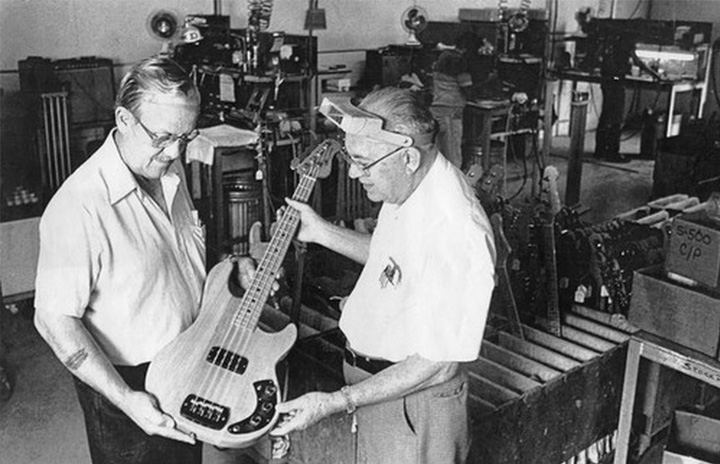
Leo was a hard worker. His first love was electronics, and building pickups and guitars became his real love, and he’d spend his entire life—that was his basic focus on life, doing that sort of thing. How it affected his family and other people was, well, I couldn’t say.
I know that being involved with it took an awful lot of my time, and you might say my family kind of suffered from the amount of time I spent over the years. Because it required a lot of attention and a lot of effort, and Leo required also that you made a lot of effort and did a lot of things.
And, as I said, when I got in there I had no intention of staying in it, and here it is 47 years later [speaking in 1992]. So it’s the kind of thing that evolves from one thing to another to another. It snowballed.
I guess Leo could be quite difficult to work with.
Oh! Oh, very! Sometimes very, very, very difficult to work with, and very hard to understand why he was like he was. He was a difficult man in a lot of ways. Leo was a really strong-minded person: the ideas he had, you didn’t change him. I mean, if he had an idea to try something, the only way you’d ever change him would be to prove that what he had would not work.
Did Leo find it difficult to give credit to people?
Very difficult. He never gave credit to anybody. There were very few things in my entire life that Leo gave me credit for personally or ever said, hey, you’re doing a good job. With ideas, Leo always had the feeling that an idea, whatever it was, was only an idea until you did something about it.
Somebody has to do the work or do the spending of the money or do the whatever it takes—legwork, paperwork, dollars spent, midnight oil spent—you’ve got to do something.
But everybody needs the occasional pat on the back.
And that’s something he didn’t do. So this is all part of what I’m telling you about Leo Fender was his own person.
How did players react to the early Fender guitars?
When we first got tooled up, got the machines set up, to build this Broadcaster model, and it was still brand new, we went to work with a few local people. But it was hard. Those days, guitar players were like cowboys, and not a very well-accepted type of thing. Not only that, here you had this little slab of wood, as they called it, and they’d been used to these real old things. So the guitar player would kind of look down his nose at this piece-of-wood thing.
Leo and I were out one night, some place way over in Los Angeles, and took one of these guitars, one of the first ones. Went to this club over there, the Riverside Rancho, a dance hall [in Glendale]. We went to one side of the stage, and what we wanted to do was wait until the rest time—we wanted the guitar player to look at this guitar.
So during this time there was a young fella came in, good looking young guy, came right over there to where we were and started talking with us. Saw this guitar, he picked it up, looked at it, tried it a little bit. He just kind of backed up and sat on the side of the stage, just picking on this.
So the band’s rest period comes, the guitar player came over that was in the band, and he asked the player if he could play right through his amplifier. He says sure, so they moved the amplifier to the side of the stage, plugged that thing in, and there he sat with this guitar, playing it.
Well, he got to do a lot of neat things on this guitar, and pretty soon all these people who’d been dancing were crowding around listening to what he was doing. It wasn’t long before the whole band was standing around. He was the centre of attention. And it was Jimmy Bryant, probably one of his biggest steps in getting on. But we didn’t know his name at that time—he told us, but it didn’t make any sense to us.
Jimmy died some years ago [in 1980], but he was one of the most fabulous guitar players around. Course, Les Paul was high on the charts, but Les Paul was a different kind of player than Jimmy. Jimmy played things on guitar that nobody could play. And, of course, this was an electric with low action—and with that cutaway, he could go right up the neck. So naturally we put one in his hand, and this was like starting a prairie fire.
Pretty soon we couldn’t make enough of those guitars. That wasn’t the only reason, but it was a lot of it, because Jimmy was on television shows, personal appearances, and everybody wanted a guitar like Jimmy Bryant’s. That was one of the starting points of that guitar.
You added the Precision Bass to the line, too.
Leo had the idea for electric bass. The big wide [upright] basses, you couldn’t hear them, now that the electric guitar was popular—you couldn’t hear the bass at all.
Leo had this idea that the bass should be electric like a guitar, and at the same time it should be fretted so that, for a guitar player, you had the same notes as on a guitar, so he actually didn’t have to relearn the fretboard. A little longer to reach, but the notes were basically the same. This was Leo Fender’s baby, this bass. So we worked on this and followed the idea, pretty much from the Telecaster shape.

But the Precision Bass had an extra cutaway compared to the Tele.
Yes, and the reason for that wasn’t the cutaway, because on the upper side you don’t need a cutaway anyhow. The reason for that horn, so to speak, was for the strap. This longer neck on the bass and the heavier keys made it overbalanced, and so by extending this body you put the suspension for the location of the strap holder more in the centre of this, to offset the balance.
These things were all designed for reasons, rather than just to make something, all these things were designed into it for a particular reason. We wouldn’t just say, oh, I’m gonna put a horn in it. For a reason, not just to say I’m gonna design something.
It’s like the keys on one side of the neck. I know Merle Travis always had the feeling that Leo copied his guitar—his basic idea that he had for Paul Bigsby, that was his idea—but you know that was not Merle Travis’s idea, that idea goes back to the 1800s, because I’ve seen pictures in your book of old guitars with that.
But I’ll tell you one of the reasons why Leo liked it, and he was very strong for this. On most guitars that had keys on one side, the strings would go up to the bone nut and then they would slant off to one side. Leo liked it so they were straight from the bridge to the post, no bending sideways on it.
That was one of the basic things about it, it made it look good and made it work wonderfully well. So there again it was a design thing, rather than trying to copy somebody, that made it a better tool for the musician.

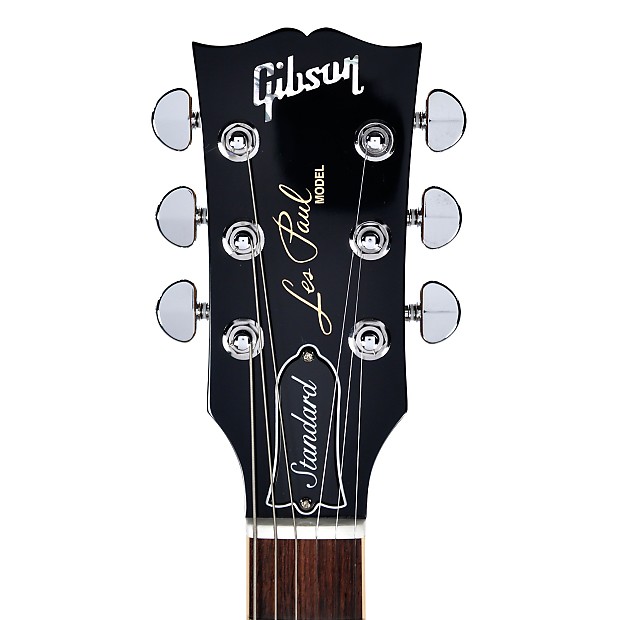
Tell me about some of the other people who worked at Fender in the early days. Freddie Tavares, for example.
Freddie came in about the time the Stratocaster was being developed, and [musician] Bill Carson worked on the Stratocaster quite a bit. I think Freddie did some of the drawings on it and some of the final things. [Freddie Tavares was a musician who started working at Fender in 1953 and was important in helping design instruments and liaising with players, and he worked at the company until his retirement in 1985.]
See, that Stratocaster was in the design stage before we ever moved from Pomona over to Raymond, the plans were already on the drawing board. Leo owned some property over on Raymond Avenue and started some buildings over there, and in March of ’53, I think, we moved to a new location on Raymond.
Anyway, Bill worked with Leo a great deal, specially on pickups, because Bill liked a certain kind of sound. He would come out when he had time, wasn’t available very much, but when he was here he was out working with Leo. Leo would be making something and Bill would take it and try it on the job. So finally I guess Leo was able to make a pickup that suited Bill’s hearing.
There were several things about the Stratocaster that Bill Carson liked, and as far his claims for this or that, one of things was this scoop on the back of the body. Bill claims to be the one that came up with that, and yet on the other hand Leo gave [musician] Rex Gallion the credit for doing this.
Rex was a big man, and he complained that the body used to cut into him a lot. Course, Bill had the same idea, but Leo says Rex was the man who came in first. I wouldn’t at this point give the credit to anybody. I’d give Bill Carson credit for the pickup and maybe the individual bridge sections.
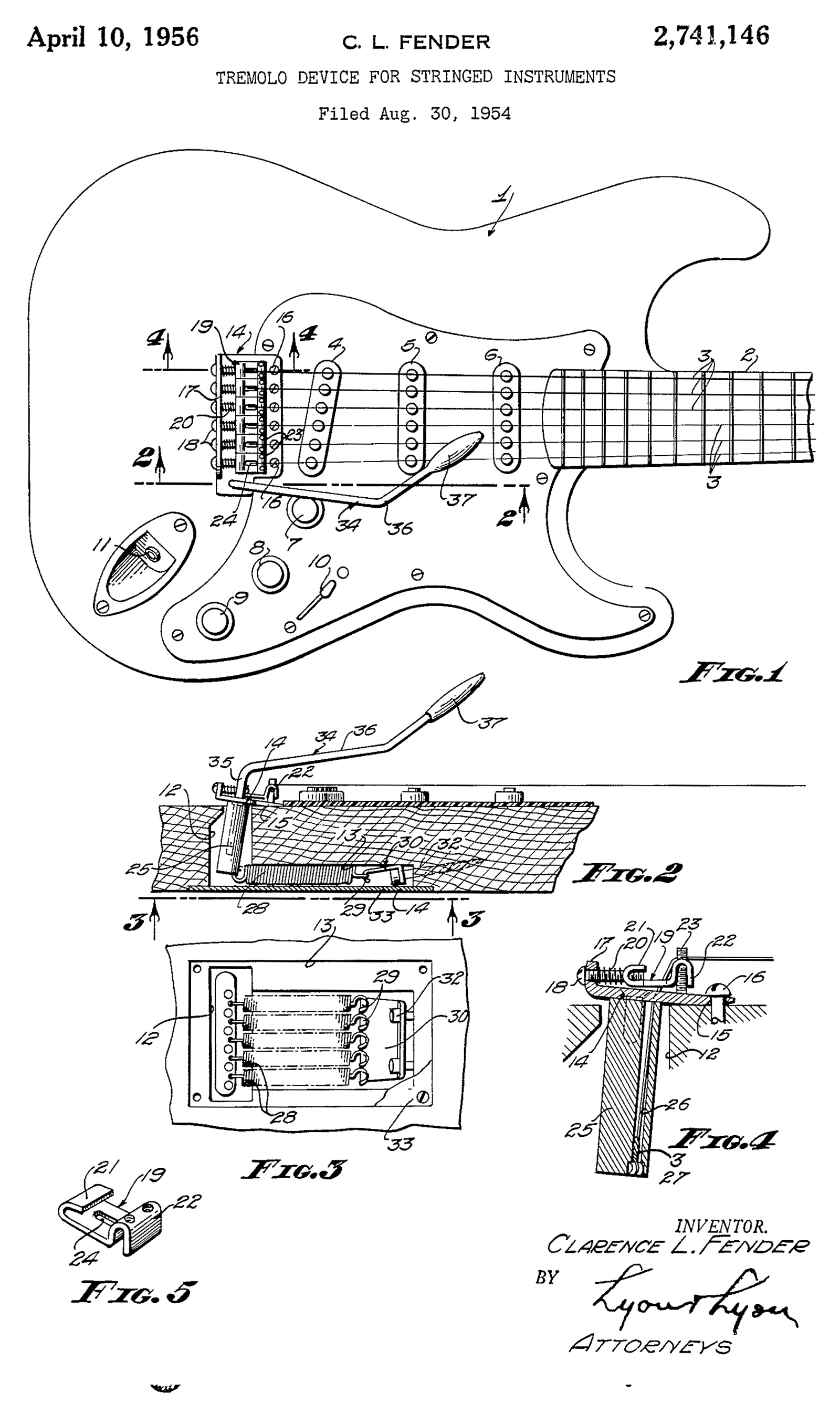
Another thing that I think Bill liked to claim a little bit was the vibrato unit being some of his ideas, and some may have been, except one thing about that. When that Stratocaster was built, the first vibrato unit that was on it, it was all designed. A lot of my time was spent on other things, too, so I wasn’t in on the design every minute, so to speak. But Bill worked with Leo and some other people, and I think Freddie really worked with Leo on this vibrato.
So it was finally decided it would be built, and tooling was purchased and parts made, and when the first one came off the line I grabbed it, and it was terrible—sounded terrible, sounded tinny, wouldn’t sustain sound. So I rushed down to the lab there, and I said Leo—it was all set up for production—I said we’ve got to stop this.
Well, that whole thing was thrown out, all the parts, all the tooling, many, many thousands of dollars. So now that thing had to be redesigned not only to sustain notes but to give a solid sound. So course, when it was done, it came out with that block in it, basically how it still is today.
But that’s why the Stratocaster didn’t come out as soon as it should have, even though it was already advertised at the sales office. There was a time lapse between the time it was advertised at the sales office until it actually came out [in 1954], because they were retooling.
How about Forrest White? I think he took charge of the factory?
He was general manager, and he took care of all the business end, running offices, all this kind of thing. [Forrest White started at Fender in 1954 and was soon running the factory. He stayed at the company until 1967.] By then I had kinda gotten away from the designing end of it, although I was still involved with it all those years. I was in charge of all manufacturing.
When CBS bought Fender [in 1965] we were operating out of 28 buildings, and we had probably 700, 800 employees. That takes a lot of doing. So your time is involved with very many things. I think when it gets big, you see some things fall down a little bit and fall off to other people. And then CBS got into the thing and they in turn—I stayed on with CBS for five years and finally got out of it.
How did Fender’s Custom Color guitars come about?
The custom color was basically my idea. See that guitar right in the corner? [Points at a red Jazzmaster.] This is the original. One time I got to thinking, why just have sunburst and blond when you can have all colors of the rainbow available? I got to working on this, this was about ’57. One day I went over to the paint store here in town, a little paint store used to be here, and I told the man in there that I had an idea for a color.
So we put a little of this and a little of that in it, mixed it up, and finally when it got to the color I wanted, I said, why, that’s the color right there. So he mixed me up a can of this color, and I went back to the factory and had that body painted.
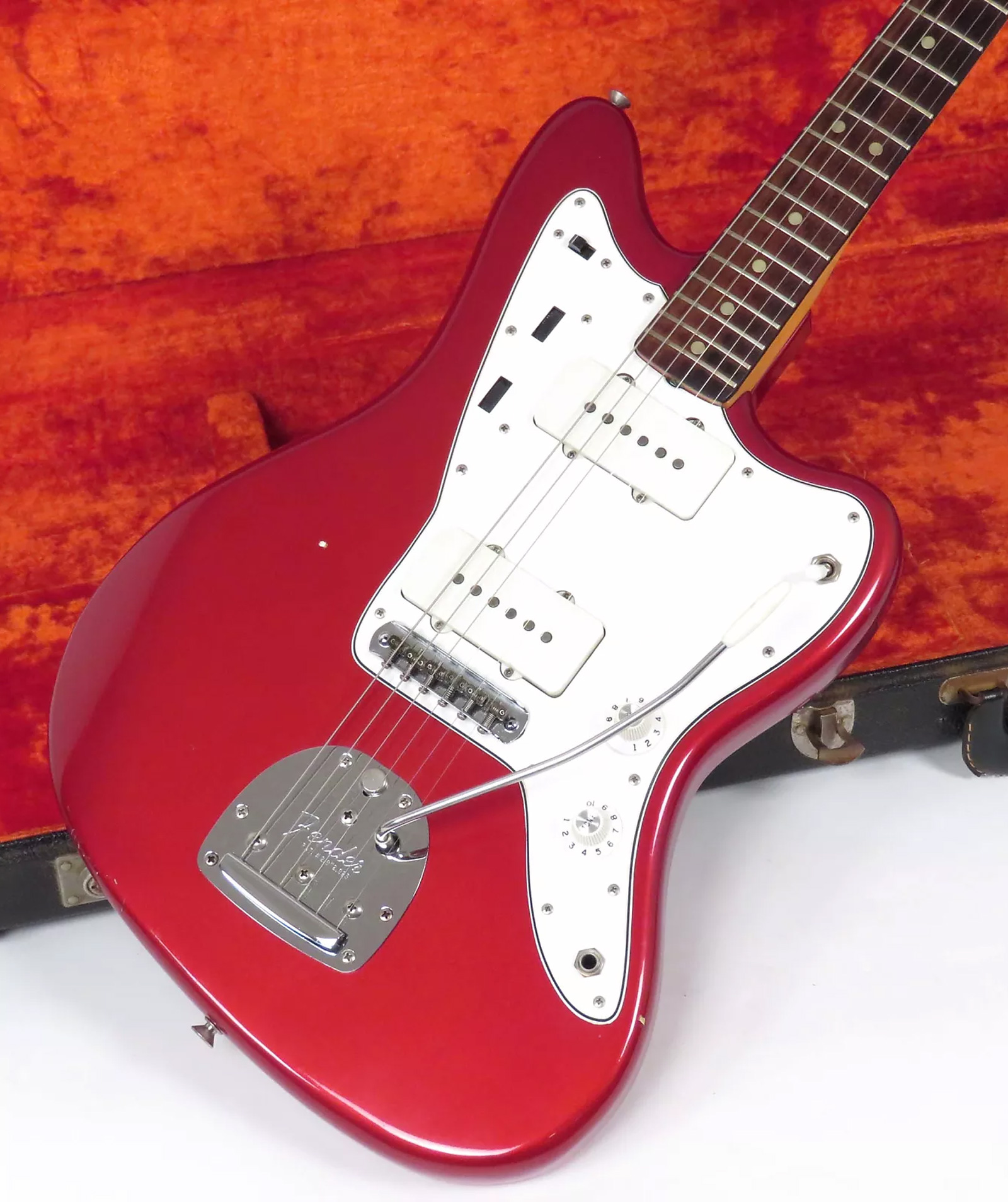
I sent it over to the sales office and even Don Randall, who was a big man in the company and head of sales, he laughed, a red guitar! Who in hell wants a colored guitar, specially a red one? [Don Randall at first worked for Radio-Tel, who distributed K&F and then the early Fender products, and then joined Fender in 1953 as head of the new Fender Sales company. He stayed at Fender until 1969.] And the sales people, they all really laughed at that red guitar. They sent it back over and put it down as being some funny thing.
So I felt a bit bad about that, because they did put it down so hard. But I kept this thing in my office, this red guitar, and the main reason I kept it in my office, Leo Fender was the type of person, soon as a prototype was proven, you’d cut it up and get rid of it, you won’t keep it around any longer. So most of the prototypes got cut up and thrown away.
Bill Carson has called me, asking what happened to this, what happened to that. Well, I kept this one in my office so that he wouldn’t have it torn up. But I kept working toward this, and finally tried some other colors. And I think finally we had some colors mixed, made some colored instruments, and just sent them to the sales office, far as I remember, to give them a try.
The Jazzmaster didn’t come out till ’58, did it?
It came out late ’57. And of course I put the color on one of the latest bodies we had. Anyway, I think we made up a few different colors, sent them out, and they got a little bit of action on it. But it’s a funny thing, this became our fiesta red, which became the best thing available in England. I don’t know about you, but we always had the idea that the English were kinda conservative people on colors, but that became their choice, they used to order them by the hundreds.
That was because Hank Marvin in The Shadows had one.
That’s it. So that became fiesta red. The Du Pont company made the color fiesta red, you can buy it right across the counter. There again, that should have been a patent, that fiesta red color. But who knows at the time you do a thing?
The Telecaster is now the longest running solidbody electric guitar ever. That’s remarkable, isn’t it?
It’s a funny thing, because back in the years after the Strat and the Jaguar came out, they got to be real popular, and the sales on Telecasters did drop down a little bit. A lot of players looked at Strat players, and they wanted all this stuff, so they leaned toward that more and kind of dropped off the Telecasters.
And one time the powers that be came up with the idea to drop the whole Telecaster line. And I just blew up! I went to Leo and I said no way Leo, we will never, never, never drop this. I said that’s our beginning, that’s our roots. We’d have to be absolutely ashamed if we dropped that.
I guess that was during the CBS period, after they bought Fender in ’65. What sort of changes took place?
There were a lot of changes, and a lot of things I don’t even know about, of course. CBS brought in a lot of people supposedly with high degrees and this and that. But that doesn’t mean that they could fit into guitar building. For example, when Fender was sold, there were four full-time people in the R&D lab. Within a year after CBS got in on it, the R&D section was moved away from the factory into another building.
I was over there one afternoon, went to see the man in charge of R&D, he was on phone calls or something, and as I was standing there I caught sight of this door and there was a time-card rack. The people that worked in there pressed a time-clock. I was waiting, so I looked at this time-card rack, and I counted 65 people.
Don Randall called me one day, and he said, you know, I cannot believe it, I think it was the first year-and-a-half or some such thing, it had cost CBS three million bucks for R&D. And what did they get? Nothing. They came out with solid state amplifiers, they bought parts by the carload to build these, and the whole thing fell apart.
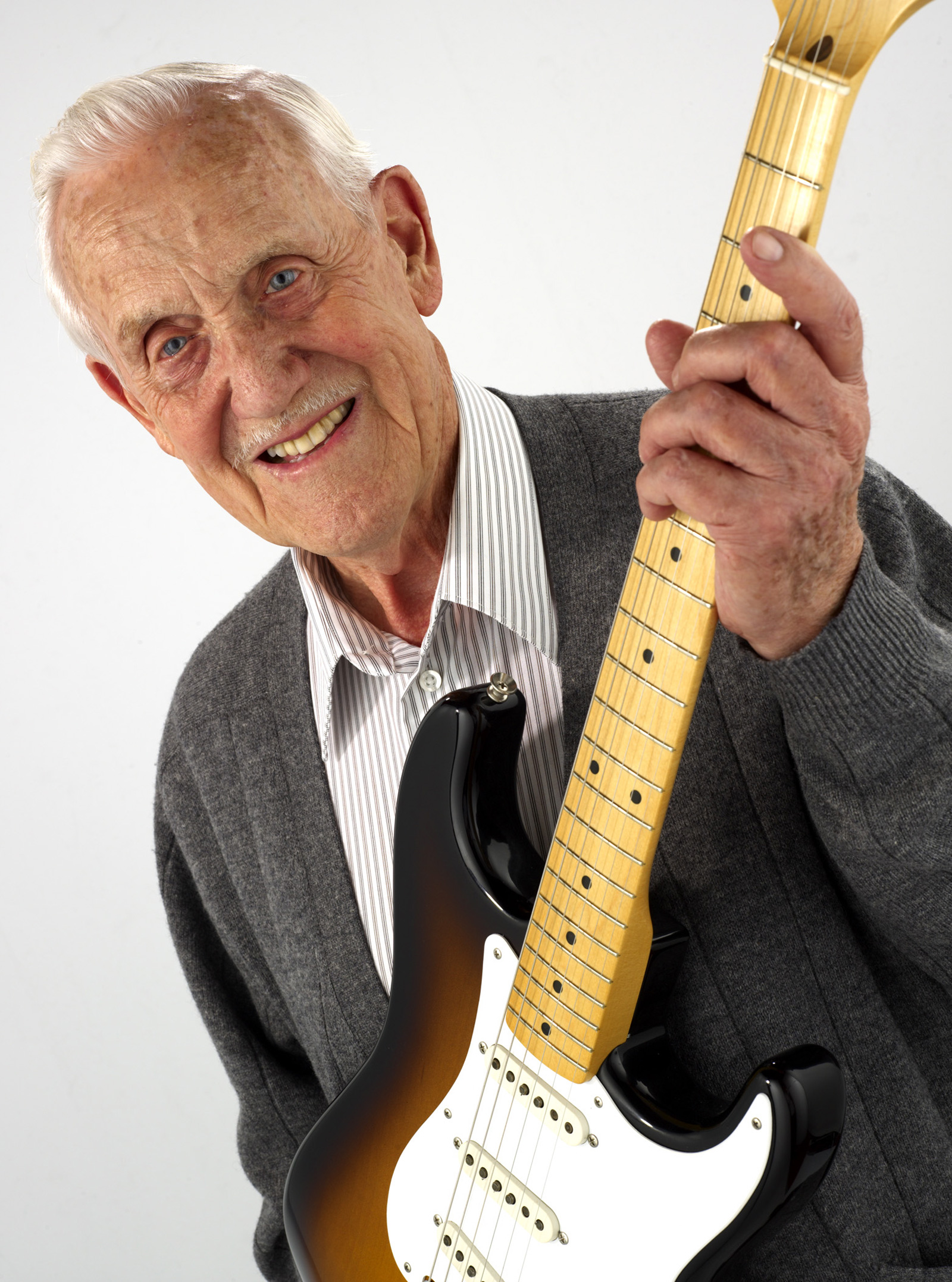
Forrest White was in there, I was in there, and we’d try to talk to somebody that would listen when we said hey, this is not good. They went right ahead and did it anyway.
Do you think quality went down after CBS took over?
Yes. I used to hear it from the dealers. They’d say the guitars don’t play like they used to, they aren’t adjusted like they used to be. I used to report back in, I’d call in from all over the US.
How do you look back on the early days?
Well, the first three instruments we came out with, we had the Broadcaster or Telecaster, the P Bass, and then the Stratocaster. And those three are still the basic instruments of the world, and the most copied, the most desired, the most sold. That must be a record that no one can equal.
With myself, it’s a feeling of accomplishment, if you can call it accomplishment, because no one will equal that, in any field. Can you imagine today how many people—and there’s no way of knowing—how many people made good livings, supported families, on those three instruments? Round the world, and still today.
It’s mind boggling to look at all this and know that we were basically the ones who got the thing rolling. I’m pleased and thankful to have been part of that. And those old instruments—it’s amazing what they sell for!
About the Author: Tony Bacon writes about musical instruments, musicians, and music. He is a co-founder of Backbeat UK and Jawbone Press. His books include The Ultimate Guitar Book, The Stratocaster Guitar Book, and The Telecaster Guitar Book. His latest book is Electric Guitars: Design And Invention (Backbeat). Tony lives in Bristol, England. More info at tonybacon.co.uk.
